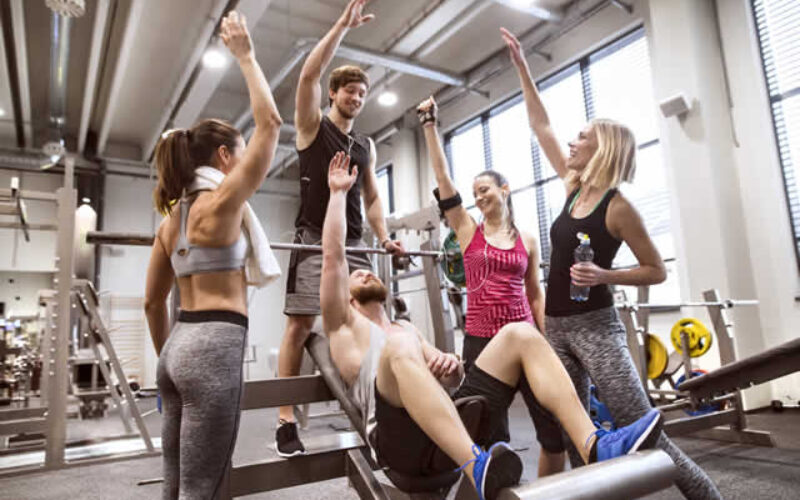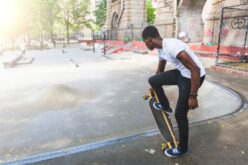But what if I told you that by relegating exercise to the back burner, you might be sabotaging your academic success and overall well-being?
In this comprehensive guide, we unlock the secrets to integration, showing you how to keep both your mind and body in top shape without compromising those vital study hours.
The Symbiosis of Study and Sweat
The symbiotic relationship between physical activity and academic performance has been well established. Regular exercise not only boosts memory and enhances cognitive function but also mitigates stress—a formidable nemesis in the life of any college student.
In the marathon of higher education, fitness isn’t just an enhancer; it’s a necessary adjunct to study. But how do you make time for the gym without dropping the ball on your next exam or paper?
Crafting Your Fitness-First Schedule
The first step is to acknowledge the time you have and the time you can make. Effective time management is the nucleus of your fitness plan.
Chart your day, account for your classes, study hours, assignments, and – don’t forget – crucial relaxation time. Identify windows of opportunity for workouts, even if those are just brief sessions.
Strategies for time management include:
- Creating a schedule:
Use a calendar to plot your study sessions and your exercise routines. - Setting priorities:
Decide how high fitness ranks on your list of priorities and allocate time accordingly. - Minimizing time wasters:
Limit social media and other distractions during study breaks. - The Pomodoro Technique:
Study in 25-minute blocks with 5-minute exercise intervals in between.
By making fitness a non-negotiable part of your daily timetable, it becomes easier to integrate it into your busy college life.
The Micro-Workout Revolution
You don’t need to spend hours at the gym to reap the benefits of physical activity. The advent of micro-workouts has revolutionized the way busy individuals—including college students—can stay fit.
Bursts of high-intensity exercises, bodyweight workouts in your dorm, or even taking the stairs instead of the elevator – these micro-accelerations in your heart rate can maintain your fitness without a major time investment.
Here’s how to incorporate short workouts into your life:
- Morning stretches:
Begin with simple stretches to wake your body and mind. - Incorporate more movement:
Walk or cycle whenever possible; it not only saves time but also money and the environment. - Study break activities:
Use your breaks for a quick jog, a set of pushups, or some yoga.
Nourishing Your Mind and Body
Exercise is just one part of the fitness equation. You are what you eat, they say, and as a college student, your relationship with food can influence your energy levels and focus. Making healthy food choices is fundamental to maintaining your overall fitness.
Tips for healthy eating on campus:
- Choose nutritious options:
Opt for whole foods and fresh produce whenever possible. - Eat regular meals:
Snack on healthy foods like nuts, fruits, and yogurt to maintain a steady energy supply. - Stay hydrated:
Carry a water bottle with you and aim for at least 8 cups a day. - Avoid all-nighters and junk food binges:
Both have immediate satisfaction but negative long-term effects on your health and wellbeing.
Leveraging Campus Fitness Resources
Many college campuses are veritable oases of fitness resources, from state-of-the-art gyms to expansive trails for running or biking. Learn to leverage these options as extensions of your study regime.
Maximize campus resources by:
- Exploring your campus:
There might be hidden gems for fitness like rock climbing walls, swimming pools, or volleyball courts. - Joining intramural sports:
They offer a structured way to exercise and bond with peers. - Utilizing class-free hours:
Hit the gym or join a fitness class during breaks. - Seeking out personal trainers:
Many campuses offer their services for free or at a reduced cost.
Fitness Community and Accountability
The loneliness of the long-distance student is lessened when you’ve got a fitness community rallying behind you. Joining clubs, team sports, or fitness classes not only boosts your physical health but can provide a network of support, motivation, and accountability.
Ways to foster a fitness community:
- Connect with like-minded students:
Whether it’s your roommate, classmate, or someone in a fitness class, building a community fosters encouragement. - Participate in fitness challenges:
These can be campus-wide or among friends to keep the momentum going. - Document your progress:
Share it on social media or keep it with friends to stay accountable.
Pushing Through the Roadblocks
Motivation is to fitness as fuel is to a car—without it, you’re not going anywhere. In college, motivation is often the first casualty of a demanding workload. Finding ways to replenish and maintain motivation is crucial to sticking to your fitness routine.
Strategies to overcome motivation humps:
- Set specific, attainable goals:
Having something to strive towards each day can be incredibly motivating. - Vary your workouts:
To prevent boredom, try different workouts to keep things fresh and exciting. - Remember your ‘why’:
Revisit your reasons for wanting to stay fit often.
When in Doubt, Dance It Out
Clubs may be where your friends are, but it’s also a great place to squeeze in an impromptu workout, especially when you’re short on time. Dancing away to your favorite tunes can burn calories and lift your spirits, offering a versatile and enjoyable way to stay fit.
other related articles of interest:
6 Fitness Tips For A Successful Weight Loss Plan
Mental Fitness Tips To Help Students Focus On Reaching Their Goals
The Final Grades on Fitness
Balancing fitness and academics isn’t just about squeezing one into the margins of the other. It’s about understanding the fundamental role that physical well-being plays in academic success and overall life satisfaction.
In the end, your grades are important, but so is the health of the person earning them. By following the advice in this post and treating fitness as an integral part of your college experience, you can ensure that you’re not just hitting the books, but also hitting the gym—and those crucial life milestones.
After all, what’s college if not the perfect playground for developing both your intellect and your biceps?
Image Credit: balancing fitness and academics by envato.com
end of post … please share it!
PAYING FOR COLLEGE: getting the aid you need
-------------------------------------------------------------------------------------------------------------
end of post idea
-------------------------------------------------------------------------------------------------------------
view home improvement ideas at our Photo Remodeling center












